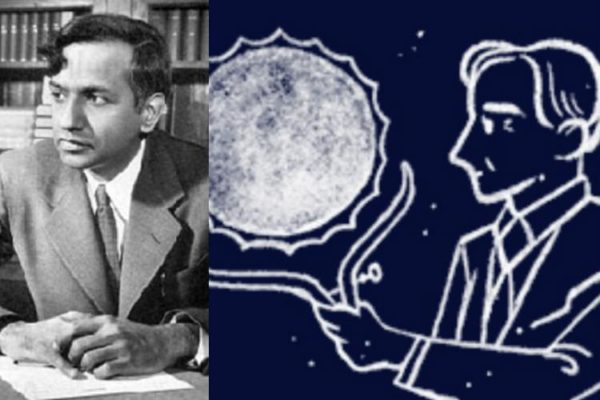Google honoured astrophysicist Subrahmanyan Chandrasekhar with a doodle on his 107th birth anniversary on Thursday. He is the first astrophysicist to win a Nobel Prize for his theory on the evolution of stars. He jointly won the award with Dr William Fowler of the California Institute of Technology.
Who is S Chandrasekhar?
Born on October 19, 1910, in Lahore, Punjab in British India, Chandrasekhar was a genius who developed his most famous finding, i.e. The Chandrasekhar limit, before he had turned 20 years old.
As Google described in a statement, “The limit explains that when a star’s mass is lighter than 1.4 times that of the sun, it eventually collapses into a denser stage called a ‘white dwarf’. When heavier than 1.4, a white dwarf can continue to collapse and condense, evolving into a black hole or a supernova explosion.”
According to a report in The Verge, Chandrasekhar’s theory was initially was rejected by his peers and was even ridiculed by Sir Arthur Eddington, a leading astrophysicist of the time. Chandrasekhar, however, had the last laugh when he won the Nobel for Physics in 1983.
The Chandra X-ray Observatory at NASA has been named him. He was widely regarded as one of the foremost astrophysicists of the twentieth century.
Chandrasekhar moved with his family to Madras when he was eight years old. He went on to study Physics at Presidency College, Madras, and pursued a PhD from the University of Cambridge. In 1937, Chandrasekhar moved to the United States to join the faculty of the University of Chicago, a position he held till his demise from a heart attack in 1995.
In his obituary, The New York Times wrote what made the “brilliant mathematician” turn to astrophysics.
“The family had a strong scientific tradition. His uncle, Sir Chandrasekhara Venkata Raman, had discovered a form of light scattering known as the Raman effect, for which he won a Nobel Prize in 1930. As a teen-ager Dr Chandrasekhar proved a brilliant mathematician, but Sir Arthur Eddington’s writing on astrophysics, in addition to a number of unusual observations, turned his attention to astrophysics. One was the discovery in orbit around Sirius, brightest star in the sky, of a tiny white companion. Its orbital behavior indicated that it was extremely dense. Its message, said Eddington, was, ‘I am composed of material 3,000 times denser than anything you have come across; a ton of my material would be a little nugget you could put into a matchbox’,” Walter Sullivan wrote for NYT.
A year before moving to America, Chandrasekhar had married Lalitha Doraiswamy, a fellow physicist. When he became a citizen of the United States in 1953, Sullivan added that it “enraged” Chandra’s father, “who felt he had betrayed his birthplace, but he (Chandrasekhar) remained loyal to his Indian ways, his vegetarianism and deep concern for India’s future.”
Chandrasekhar wrote books on numerous topics “ranging from radiative transfer of energy through the atmospheres of stars to the motions of stars within galaxies” and was also a dedicated teacher, according to the University of Chicago. He was the editor of Astrophysical Journal, a leading journal in the field, for almost two decades.
“Chandra cared for the personal and intellectual well-being of his students, trained them carefully and was willing to spend enormous amounts of time with them. He was a powerful role model for all who came in contact with him,” Princeton University Provost Jeremiah Ostriker, a student of Chandrasekhar, said following his death.
The University of Chicago, on its site, describes one particular incident which “illustrates Chandrasekhar’s devotion to his science and his students”.
“In the 1940s, while he was based at the University’s Yerkes Observatory in Williams Bay, Wis., he drove more than 100 miles round-trip each week to teach a class of just two registered students. Any concern about the cost-effectiveness of such a commitment was erased in 1957, when the entire class – T.D. Lee and C.N. Yang–won the Nobel Prize in physics.”
Chandrasekhar was also an enthusiast of literature, music and philosophy of science.
“He received 20 honorary degrees, was elected to 21 learned societies and received numerous awards in addition to the Nobel Prize, including the Gold Medal of the Royal Astronomical Society of London; the Rumford Medal of the American Academy of Arts and Sciences; the Royal Medal of the Royal Society, London; the National Medal of Science; and the Henry Draper Medal of the National Academy of Sciences,” the university said.
Doodle
In a statement, Google said, “Today we honor the original starman whose universal theories propel current space research and modern astronomy on their ambitious missions. Happy birthday, Chandra!”



Leave a reply